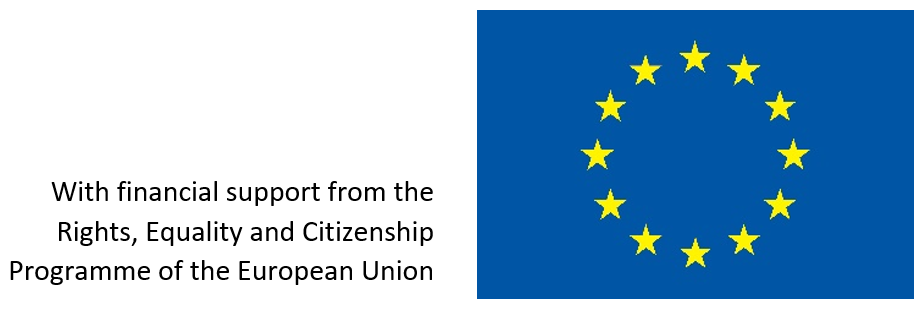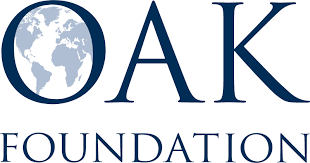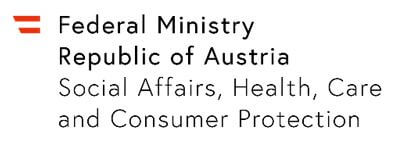Acting beyond binaries
Today, there are over thirty armed conflicts worldwide.[i] The number has doubled since the last decade.[ii] In addition to causing the death of civilians and soldiers, it drives a large part of the population into poverty, forces them to migrate and become internally displaced people or refugees, destroys infrastructure, and substantially reduces access to basic sanitation. And these harms affect vulnerable parts of society disproportionally.
Gender-based violence and conflicts
The probability of being physically, verbally, and psychologically abused rises significantly in the absence of the rule of law. While approximately 35 percent of women worldwide have experienced gender-based violence (GBV) during peacetime, more than 70 percent of women ‘have experienced GBV in some crisis settings’ says UN Women.[iii]
Women and girls face higher risks of human trafficking, domestic violence, exploitation, and sexual slavery. Children and young girls suffer from a lack of access to education, face higher risks of early marriages, and witness increased domestic responsibilities. Furthermore, it has been recognized internationally that rape and sexual assault are used as a weapon of war. Wartime rape is not only used to destroy the victim’s personality and identity but is used to destroy the community as a whole.[iv]
Conflicts hampering access to basic needs
One major problem is that emergency response mechanisms for conflict situations are often not designed from a gender-sensitive approach. One of the areas often neglected is ensuring access to Sexual and Reproductive Health and Rights during times of crisis. According to the International Crisis Group: “over half of the world’s maternal deaths occur in countries torn apart by armed violence and in fragile states.”[v]
Emergency aid packages often fail to include condoms, other contraceptives and sanitary products. “The very real problems of menstruating girls and women in war zones are bound to be ignored in many countries all over the world when the lens through which humanitarian support is provided is patriarchal and lacks gender sensitivity,’ explains Inessa Adilkhanyan from the Sexual Assault Crisis Center.[vi]
Adapted measures for intersecting identities and vulnerabilities
However, a gender-sensitive approach needs also to include intersecting factors such as age, abilities, and ethnicity. Marginalized groups face particular hardship when seeking access to shelters and health facilities during conflict settings and are often forgotten in the assessment phase, which is the critical step for mapping out the population’s needs and drafting an adequate emergency response plan.[vii]
The elderly face higher risks of poverty, lack access to health and nutrition necessities, and are often left alone and unprotected.[viii] Humanitarian support must also incorporate accessibility questions and consider the limited mobility of a section of the population. Particular attention should be given to people with disabilities as they are “more vulnerable to physical, psychological, sexual or financial violence, neglect, entrapment, and degradation.”[ix] Even though research is still scant on the intersection between age, gender, race, and disability in humanitarian contexts, evidence shows that women and girls with disabilities are particularly vulnerable to discrimination, exploitation, and GBV. [x] As pointed out by Hemingway and Priestley, people with disabilities are disproportionately vulnerable in emergencies “primarily as a consequence of social disadvantage, poverty and structural exclusion” rather than because of any inherent vulnerability.[xi]
‘Still a blind spot’: how gender shapes dynamics of inclusion and exclusion
Sexual orientation, gender identities, gender expression, and sex characteristics (SOGIESC) are additional factors that need to be considered while drafting emergency responses and recovery plans. LGBTQI persons “are often among the least protected of all groups [and] face additional perils created by the chaotic environment and breakdown of law and order.”[xii] LGBTQI people face higher risks of, among others, harassment, sexual violence, rape and forced anal and vaginal examinations, executions, sexual slavery, torture, intimidation, death threats, forced disappearances, and ‘corrective rape.’[xiii]
As noticed by Regina Jegorova-Askerova during a panel discussion on GBV during and after conflict: ‘LGBTQI people are never talked about. We rarely hear about more marginalized communities. […] We talk about women with disabilities without having them in the room.’[xiv]
Humanitarian work: the continuum of colonial structures
Next to a general lack of meaningful inclusion of gender, age, and abilities, racism shapes the way we draft and implement emergency responses. We can see racism in humanitarian responses through, for example, the different treatment and polices regarding refugees, as some are warmly welcomed while others are treated as ‘not valuable.’ [xv] Asylum-seekers and refugees “may be denied equal access to public services, become targets of racially motivated acts, […] institutionalized discrimination […] verbal and physical abuse and, ultimately, hate crimes.”[xvi]
Furthermore, Dr. Katwikirze notes that in humanitarian international organizations there is “an unhealthy imbalance in staffing ratios between the Global North and the Global South,” and persistent racist humanitarian operations.”[xvii] For example, in 2020, an internal statement was signed by 1,000 staff members of the international organization Médecins Sans Frontières to push for an independent investigation into racism within its organization. In this statement, the NGO is claimed to “institutionally racist and reinforcing colonialism and white supremacy in its humanitarian work” through it’s “dehumanising” programmes, run by a “privileged white minority.”[xviii]
Primary prevention to tackle the root of the problem
Injustices present in peacetime only exacerbates during conflict, which leads to marginalized groups cut out from the emergency plans, being exposed to higher economic harm, double discrimination, increases risk of GBV and even death. Thus, it is primordial to start countering societal injustices during peace time. We need to understand the roots of sexism, racism, and other forms of discrimination to be able to tackle these discriminations in a meaningful and sustainable way, which means eradicating stigma, changing perceptions and framings, and decolonizing international institutions along the way.
Societal attitudes, such as endorsing traditional values, acceptance of violence, and the unequal distribution of power, are some indicators that positively correlate with higher risks of GBV and discriminations. Therefore, we must start tackling today’s power dynamics, which also goes through tackling the process of militarization.
‘No one in the world today is untouched by militarization’ [xix]
Indeed, military spending has been steadily increasing globally in the past seven years, and militarization is part of our everyday life. Many of us have been socialized with stories and myths, movies, TV series, and video games that glorify soldiers, battles, and wars. Statues of generals and war heroes can be found in many different places throughout the world, and the narrative of existing ‘threats to national security’ shapes today’s policymaking and international relations.
‘Security’, ‘safety’, ‘protection’ and ‘defense’ are recurring words part of the “global public discourse of fear which encourages proactive military action, legitimates war as a surgical intervention.”[xx]
We need to take a step back and analyze how militarization intersects with other social constructions, such as gender, race and ethnicity and reinforces existing power dynamics.[xxi] Understanding militarization and the current narrative over security shape our beliefs and behavior could give us tools to disrupt this culture that accepts and sustains violence. [xxii]
Recommendations
As the number of armed conflicts increases, we need effective early warning systems and holistic gender and trauma-sensitive and intersectional response and recovery plans, which need to be coordinated and implemented through national and transnational collaboration.
From the first actions onwards, meaningful data collection needs to be continuously implemented, giving special attention to vulnerable groups, minorities, and LGBTQI people. Through this data gathering, comprehensive assessment can be obtained to adapt timely to specific needs, monitor the progress of humanitarian support, create visibility of intersectional harm, and develop learning strategies. And we need to have diverse teams throughout emergency response planning and beyond. Finally, vulnerable groups, minorities, and LGBTQI persons must genuinely be part of the Peace Agreements processes.
In the long term, we need to find sustainable housing solutions for internally displaced people and provide holistic healing to the victims of armed conflict. This includes providing for psycho-social rehabilitation, access to justice, right to truth, reparations, and non-repetition while considering the transgenerational trauma in the community.
But these recommendations are not enough. They are only the tip of the iceberg. Without societal change, challenging traditional gender roles, eradicating prejudice and stigma, tackling society’s acceptance of violence and militarization, and decolonizing current humanitarian aid, we will always remain a step behind.

About the author
Charlotte Cramer
Charlotte Cramer is a queer gender justice activist and research-focused graduate student of Human Rights and Humanitarian Action at Sciences Po Paris. She has worked in various multicultural and multilingual NGOs, mainly focusing on advocating and campaigning on gender issues.
Her areas of interest are, among others, gender-based violence in conflict and post-conflict settings, reproductive justice, and gender, peace and security being critically analyzed through interdisciplinary and intersectional feminist lenses. Her final goal is to work as a human rights researcher.
[i] Geneva Academy’s website. Accessed December 6th, 2022. https://www.rulac.org/browse/conflicts; IISS (2022) The Armed Conflict Survey 2022. Accessed December 6th, 2022.https://www.iiss.org/publications/armed-conflict-survey/2022/armed-conflict-survey-2022
[ii] United Nations High Commissioner for Refugees (2022). Global Trends: Forced Displacement in 2021. p.5. https://www.unhcr.org/62a9d1494/global-trends-report-2021
[iii] United Nations Women (n.d.). Facts and figures: Humanitarian action. Accessed December 6th, 2022. https://www.unwomen.org/en/what-we-do/humanitarian-action/facts-and-figures
[iv] Caliskan and Griese (2006): Women fighting violence in War-Torn Societies, Society for International Development.
[v] Arradon (2018). A Hidden Face of War. International Crisis Group. Accessed December 6th, 2022. https://www.crisisgroup.org/global/hidden-face-war
[vi] WAVE (2022). Preventing and responding to gender-based violence during the war and in post-war settings: Experiences and recommendations of women’s NGOs https://wave-network.org/toolkit-prevention-respondde-gbv-war-post-war-settings/
[vii] Knight (2016). LGBT People in Emergencies – Risks and Services Gaps. Human Rights Watch. Accessed December 7th, 2022. https://www.hrw.org/news/2016/05/20/lgbt-people-emergencies-risks-and-service-gaps
[viii] WAVE (2022). Preventing and responding to gender-based violence during the war and in post-war settings: Experiences and recommendations of women’s NGOs. p. 16 https://wave-network.org/toolkit-prevention-respondde-gbv-war-post-war-settings/
[ix] Ortoleva (2017). Recommendations for Action and Implementation. https://www.americanbar.org/groups/crsj/publications/human_rights_magazine_home/2016-17-vol-42/disability-rights-under-siege/accounting-for-women-and-girls-with-disabilities-in-conflict-and/
[x] Rohwerder (2017). Women and girls with disabilities in conflict and crises. H4D Helpdesk Report. Brighton, UK: Institute of Development Studies. https://assets.publishing.service.gov.uk/media/5b9a458540f0b67866ffbd56/032-Women_and_girls_with_disabilities_in_crisis_and_conflict.pdf
[xi] Hemingway and Priestley (2006) Natural hazards, human vulnerability and disabling societies: A disaster for disabled people? The Review of Disability Studies: An International Journal. p.64 cited in Rohwerder (2017). Women and girls with disabilities in conflict and crises. H4D Helpdesk Report. Brighton, UK: Institute of Development Studies. https://assets.publishing.service.gov.uk/media/5b9a458540f0b67866ffbd56/032-Women_and_girls_with_disabilities_in_crisis_and_conflict.pdf
[xii] Margalit (2018). Still a blind spot: the protection of LGBT persons during armed conflict and other situations. International Review of the Red Cross. p. 238. https://www.corteidh.or.cr/tablas/r39345.pdf
[xiii] Margalit (2018). Still a blind spot: the protection of LGBT persons during armed conflict and other situations. International Review of the Red Cross. p. 238-242. https://www.corteidh.or.cr/tablas/r39345.pdf
[xiv] Panel Discussion that took place within the WAVE and OSCE Conference on Preventing and responding to gender-based violence during the war and in post-war settings on November 8th, 2022, in Tbilisi.
[xv] Mavelli (2017) Governing populations through the humanitarian government of refugees: Biopolitical care and racism in the european refugee crisis. Review of International Studies http://doi.org/10.1017/S0260210517000110; De Lauri, Jelusic, Johais and Mogstad (2022). Militarisation, racism and Russophobia: What the war in Ukraine produces and reveal. Norwegian Centre for Humanitarian Studies. Accessed December 7th, 2022. https://www.humanitarianstudies.no/militarisation-racism-and-russophobia-what-the-war-in-ukraine-produces-and-reveals/
[xvi] UNHCR (2009) Combating racism, racial discrimination, xenophobia and related intolerance through a strategic approach. Division of International Protection.
[xvii] Katwikirize (2020) Racism in humanitarian action: a call to action. Humanitarian Practice Network. Accessed December 13, 2022. https://odihpn.org/publication/racism-in-humanitarian-action-a-call-to-action/
[xviii] McVeigh (2020). Médecins Sans Frontières is ‘institutionally racist’, say 1,000 insiders. Accessed December 13, 2022. https://www.theguardian.com/global-development/2020/jul/10/medecins-sans-frontieres-institutionally-racist-medical-charity-colonialism-white-supremacy-msf
[xix] Gonzáles et al. (2019) Militarization: A Reader. p.7. Duke Press University.
[xx] Cockburn et al. (2015) The Continuum of Violence: Cultures of Fear. Pluto Press.
[xxi] UN Women (2022) Research Paper: The Impact of Militarization on Gender Inequality. https://www.unwomen.org/sites/default/files/2022-08/Impact-of-militarization-on-gender-inequality-en.pdf;
De Lauri, Jelusic, Johais and Mogstad (2022). Militarisation, racism and Russophobia: What the war in Ukraine produces and reveal. Norwegian Centre for Humanitarian Studies, accessed December 7th, 2022. https://www.humanitarianstudies.no/militarisation-racism-and-russophobia-what-the-war-in-ukraine-produces-and-reveals/
[xxii] As stated by UN Women ‘It is estimated that the cost of extending basic water, sanitation, and hygiene to unserved populations, achieving quality universal primary and early secondary education for all, and eliminating extreme poverty and hunger would cost only 2 per cent, 6 per cent, and 13 per cent of global military spending, respectively’ says UN Women according to the United Nations Office for Disarmament Affairs (2019). Disarmament Yearbook (Part II), vol. 44. See: https://www.unwomen.org/en/what-we-do/peace-and-security/facts-and-figures#_edn38 and https://yearbook.unoda.org/2019/






